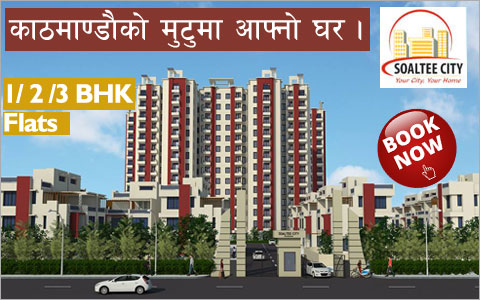National News
Nepal Rastra Bank (NRB) has readied draft of the guidelines for home reconstruction refinance to bank and finance institutions (BFIs) to be extended to people who lost their homes in the earthquake. Though the central bank had announced that it would provide zero percent refinance facility to BFIs right after the earthquake of April 25, the BFIs have been showing reluctance to extend such loans citing lack of clear procedure and guidelines.
NRB announced zero percent refinance facility to BFIs in the last week of April, asking BFIs to float home reconstruction loans at a maximum of 2 percent interest rate. The central bank has put the limit of such loans at Rs 2.5 million for Kathmandu Valley and Rs 1.5 million for other earthquake-hit districts.The draft guidelines unveiled by NRB on Thursday states that such loans would be floated only to people who or whose family do not have a home fit for living. BFIs will not be allowed to charge more than 2 percent interest rate for such loans and that such loans will be free of any charges. Also, BFIs will also not be allowed to change interest rates of such loans, according to the draft guidelines.
According to the NRB officials, the central bank unveiled the draft guideline to lay out the details and process to refinance the loans to BFIs and set criteria of borrowers to get such loans. “We have made the draft guidelines public after holding consultation with BFIs and other concerned stakeholders. The guidelines will be endorsed next week after getting feedbacks from the concerned stakeholders,” NRB spokesperson Min Bahadur Shrestha told Republica.“Quake-hit people, whose homes have been completely destroyed, can start applying for the loans from next week once the guidelines come into effect.”
NRB has fixed maturity period for such loans at a maximum of 10 years and minimum of five years. The maturity period for BFIs for refinancing will be one year.Meanwhile, NRB has made it mandatory for the borrowers taking this type of loan to rebuild the home by adhering to the national building code and make their homes earthquake-resistant. The interested borrower should produce a proof from local bodies that certifies that his/her home has been destroyed by the quake and that no other family members have home fit for living.
The NRB has, however, said that it will not refinance loans exceeding ceiling set by it.
Bankers, however, say that the draft guidelines do not address some of their concerns. “We are positive to offer relief to earthquake-hit people who have become homeless. However, NRB has set the interest rate at 2 percent which cannot cover our administrative and overhead cost which is above 2.75 percent for a development bank,” Krishna Raj Lamichhane, president of Development Bankers Association of Nepal, told Republica. “It will be better if NRB allows us to include these loans in the deprived sector mandatory lending as these loans is also for the people who are deprived of shelter due to the quake.” He also said NRB should allow BFIs to cover their administrative cost by levying one-time charge on borrowers. “The guidelines also lacks clarity on interest rates to be charged on loan defaulter as the NRB do not provide refinancing for loans that go default,” he added.
source:myrepublica, 22 may 2015
- 9th Nepal Buildcon International Expo 2024
- Real Estate Expo 2023
- NRB raises housing loan limit to encourage home constructions
- Nepal Rastra Bank (NRB) Monetary Policy 2080-2081
- New Price of Land in Kathmandu Metropolitan City, Nepal
- Capital Gains Tax Rate on Real Estate Transactions in Nepal 2080-81 ( 2023/24 )
- Kathmandu metropolis implements free parking policy for commercial buildings and hospitals

![[X]](https://www.housingnepal.com/images/popup-close-button.png)







































































































































































































































































































































































































 Facebook
Facebook
 Delicious
Delicious
 Digg
Digg
 Reddit
Reddit
 Stumble Upon
Stumble Upon









